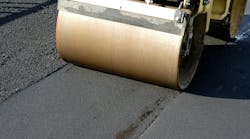About the author: Ted Corvey is paver business director for Pine Hall Brick Co. Corvey can be reached at [email protected] or 800.334.8689.
Town leaders in Luray, Va., had both a problem and a need. The centerpiece of the town, the century-old and long-abandoned Luray Train Depot, was an eyesore and needed repair; at the same time, the Luray-Page County Chamber of Commerce needed a place to host small gatherings—a place that would be the “living room” of the community for those who were in the area to visit the historic caverns, wineries and other attractions within this section of the Shenandoah Valley.
The problem and need came together in a project that preserved the past, blending old and new, and focused on the future by preserving natural resources via green construction materials, design and technology.
From the Beginning
The original builders had used native red clay brick in the walls and in pavers on the ground. The challenge was that the site itself had some issues with flooding caused by storm runoff. If not addressed, these would pose a problem that would continue into the future.
As plans developed, the design team and the town leaders designated three main goals:
- Refitting a 100-year-old building with materials that would be in keeping with those used originally;
- Doing it in a way that was as environmentally sensitive as possible; and
- Completing the project on time and under budget.
A relatively new product, StormPave permeable clay brick pavers by Pine Hall Brick Co., Winston-Salem, N.C., helped planners achieve all three goals.
A Compatible Choice
The conventional answer to storm water in parking lots involves sloping the lot to a drain—or more accurately, drains—and piping it underground either off the property to another drain or to a nearby fenced-off retention pond or bioswale. For the train depot project, the property and surrounding area did not easily lend themselves to that solution from a space or a cost standpoint. A permeable asphalt system was considered next, but then rejected after concerns arose over the long-term performance and maintenance requirements.
The clay brick pavers were chosen for two reasons: Rigorous, long-term testing has proven that they withstand both pedestrian and vehicular traffic for decades, and the clay pavers were more visually compatible with the surrounding streetscape. The new pavers, which are distressed to look old, are a good match to clay brick pavers that have been on the site for the past 100 years. Furthermore, they are a natural complement to the red brick depot building.
Twice Green
The paver selected is a close first cousin—and virtually identical in appearance—to the English Edge paver that Pine Hall Brick Co. has made for decades, but there are some differences. The nibs, or spacers, on the StormPave are slightly wider. The 0.25-in. void between each paver provides the spaces through which rainwater is allowed to infiltrate.
The biggest difference, however, is what cannot be seen. A conventional paver is installed with a bed of crusher run gravel, which is compacted and then topped with 1 in. of sand. More sand is then swept into the gaps between the pavers. With a permeable clay brick paver, the installation is more complex. Open-graded aggregates without fine particles are used, rather than gravel and sand. A No. 2 stone is used as a subbase, then a finer grade of No. 57 stone is used as a base, followed by a bedding layer of No. 8 or No. 89 aggregate. The same stone that was used as the bedding layer is swept into the joints.
The pavers are green in two ways. They are made out of dirt (clay or shale) and water, onto which heat has been applied. Because green means embracing sustainable design, bricks may be the greenest building material available. They have an unsurpassed life cycle, are energy efficient, are made out of the most abundant building material on the planet, have minimal waste in manufacture and offer countless recycling options, according to the Brick Industry Assn.
By being installed in a permeable system, water flows into the ground, where it is naturally filtered, instead of flowing across a concrete or asphalt surface, picking up pollutants and washing them into the nearest stream. The series of aggregates underneath the pavers allows the water to flow while good bacteria builds up over the rock and aids in reducing pollutants.
The filtration process is not something that visitors to Luray can see. But since the project was completed in July 2009, they can observe an impressive “new-old” facility that has been brought back to life, complete with contrasting pavers used as lines to mark off parking spaces and handicapped symbols. Luray Train Depot is a facility for which 100 years is not even middle age.
Download: Here

